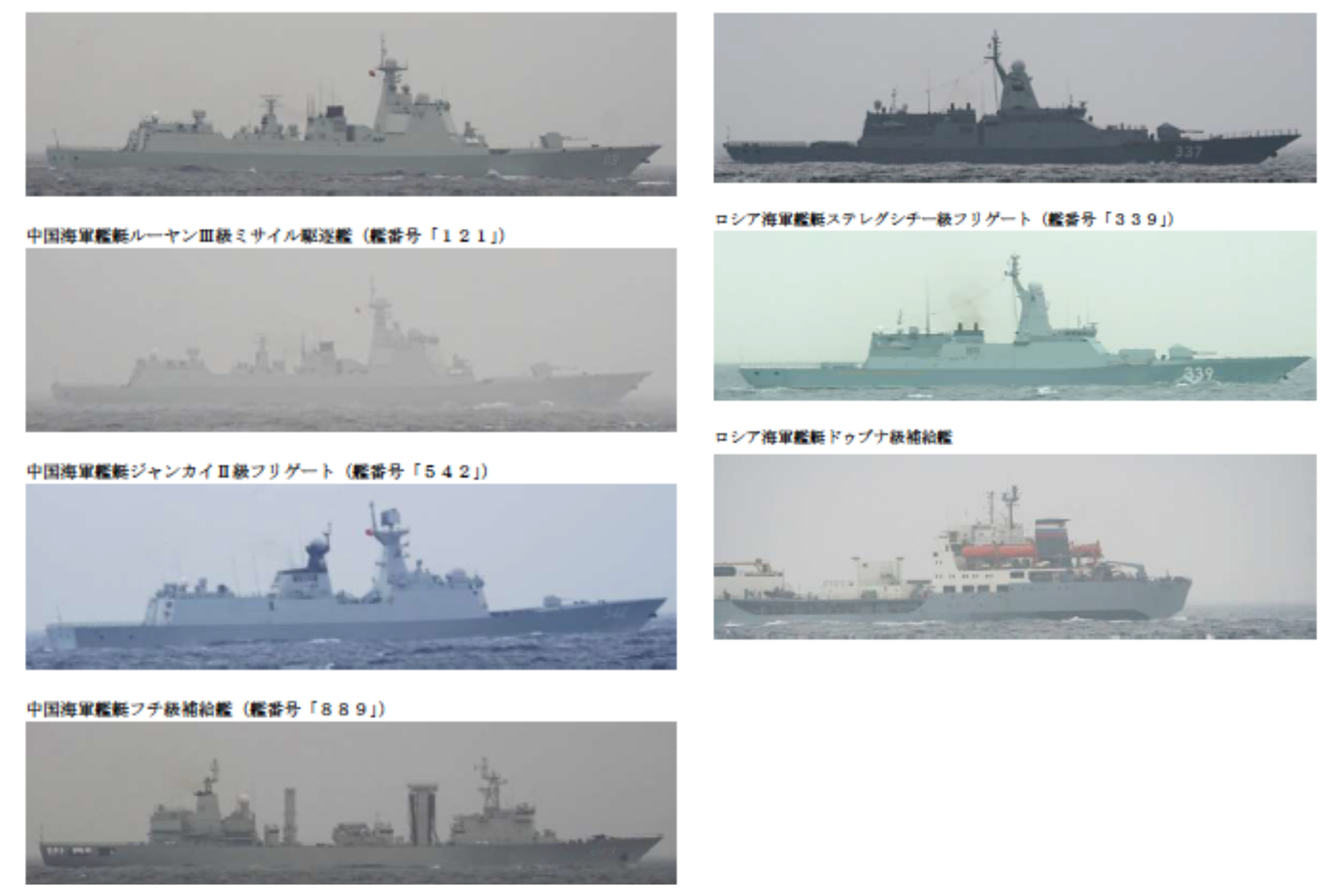
A joint Russian and Chinese flotilla sailed near Alaska and the Aleutian Islands earlier this week, two Alaska lawmakers said on Sunday.
Sen. Lisa Murkowski (R-Alaska) and Sen. Dan Sullivan (R-Alaska) said in a joint statement on Saturday that they were given a detailed briefing on the joint flotilla and said it included eleven ships.
The pair confirmed that four U.S. Navy destroyers, along with a P-8 Poseidon maritime patrol aircraft, had been dispatched to the location of the flotilla. The Russian-Chinese flotilla did not enter U.S. territory, a defense official told USNI News.
USS John S. McCain (DDG-56), USS Benfold (DDG-65), USS USS Chung-Hoon (DDG-93) and USS John Finn (DDG-113) were assigned to monitor the formation, according to a Saturday report in The Wall Street Journal.
Benfold and John Finn are both assigned to the forward-deployed and Japan-based Destroyer Squadron 15 (DESRON 15) and have been shadowing the Russian-Chinese flotilla, with U.S. Defense Department images showing the two destroyers operating in the North Pacific Ocean since July 31. Before that Benfold was in the Philippine Sea on July 29.

Benfold conducted a replenishment at sea exercise the day before in the Philippine Sea with Japan Maritime Self-Defense Force (JMSDF) fleet oiler JS Tokiwa (AOE-423), while John Finn made a port call to Sasebo, Japan on July 28 to refuel and supply.
The joint Russian-Chinese flotilla left Vladivostok on July 27 and patrolled near Japan and subsequently sailed through La Perouse Strait from the Sea of Japan to the Sea of Okhotsk over July 28 to 29. Ten of the ships are Russian Navy destroyers RFS Admiral Panteleyev (548) and RFS Admiral Tributs (564); corvettes RFS Gremyashchiy (337) and RFS Hero of the Russian Federation Aldar Tsydenzhapov (339; and fleet tanker Pechenga, while the PLAN ships are Chinese destroyers CNS Guiyang (119) and CNS Qiqihar (121); frigates CNS Zaozhuang (542) and CNS Rizhao (598); and fleet oiler CNS Taihu (889), USNI News previously reported.
The statement from the Alaska lawmakers said the flotilla included 11 ships.
“This is a stark reminder of Alaska’s proximity to both China and Russia, as well as the essential role our state plays in our national defense and territorial sovereignty. Incursions like this are why we are working so hard to secure funding and resources to expand our military’s capacity and capabilities in Alaska, and why our colleagues must join us in supporting those investments,” reads the release.
There has been no information released on the identities of the 11 ships. The 11th ship is possibly a Russian Navy ship operating in those waters, though it could also be a PLAN ship on an independent deployment or a Russian or Chinese survey ship operating in the Bering Sea.
“The incursion by 11 Chinese and Russian warships operating together – off the coast of Alaska – is yet another reminder that we have entered a new era of authoritarian aggression led by the dictators in Beijing and Moscow,” Sullivan said in the statement.
“In recognition of this reality and our state’s unrivaled strategic location, for years, I’ve been pressing the Navy and each successive administration to commit to a greater Naval, Coast Guard, and Marine Corps presence in Alaska, more Arctic-capable vessels, and more infrastructure to host these assets, like the deep-water port of Nome.
Sullivan praised the Navy’s response to the current situation.
“Last summer the Chinese and Russian navies conducted a similar operation off the coast of Alaska. Given that our response was tepid, I strongly encouraged senior military leaders to be ready with a much more robust response should such another joint Chinese/Russian naval operation occur off our coast. For that reason, I was heartened to see that this latest incursion was met with four U.S. Navy destroyers, which sends a strong message to Xi Jinping and Putin that the United States will not hesitate to protect and defend our vital national interests in Alaska,” he said.
A Friday news release by Russia’s Ministry of Defense said the flotilla was currently in the Bering Sea. “The ships’ crews have already passed the Sea of Japan, La Pérouse Strait, the Sea of Okhotsk and Kamchatka Strait. Seamen of the two countries have practiced joint tactical maneuvering, conducted communications training and carried out helicopter landings and take-offs from the decks of each other’s ships.In total, the squadron has passed more than 2,300 nautical miles since the start of the patrol,” reads the release.
The statement also said that a joint anti-submarine exercise took place in the south-western part of the Bering Sea, with a mock submarine target successfully detected and subsequently destroyed by anti-submarine rockets. China’s Ministry of National Defense has been largely silent on the joint patrol, only issuing a statement on July 26 saying that Chinese and Russian naval vessels were set to hold a third joint maritime patrol in the western and northern waters of the Pacific Ocean. “This operation does not target any third party, and has nothing to do with the current international and regional situation,” reads the statement.





